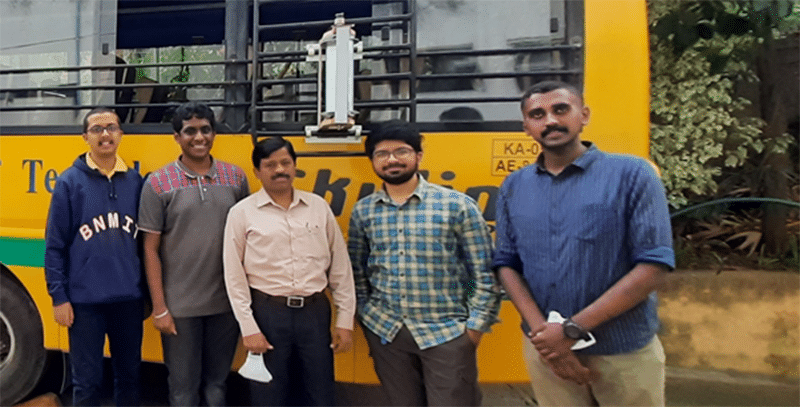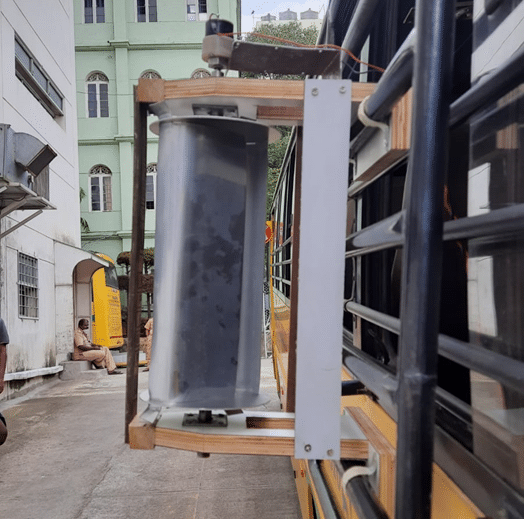The prototype works as follows.
The portable wind turbine can be installed on the top of a vehicle. Once the vehicle is set in motion, it generates wind energy which in turn leads to the rotation of the turbine blades producing electrical energy that can be used to charge auxiliary devices.
According to Dr. Shivalingappa, the idea is the reverse of the system in western countries where turbines are installed on the road and are rotated by the wind generated by moving vehicles, thus converting kinetic energy of the wind to electrical energy.
To test the efficacy of the prototype, the team went around the campus with the turbine mounted on the college vehicle, and result were encouraging. ‘At a speed of 30 km/h, a power of approximately 12 W was generated, with the turbine rotating at 1000 rpm. On highways, the turbine can rotate much faster and thus higher power can be produced,’ said Omkar N Kashyap, one of the team members.
A vehicle’s average speed (80-110 km/hr) on a highway creates a wind speed of around 22-26 m/s. When this strikes the blades of the turbine, the turbine starts rotating. This in turn rotates the DC generator which produces sufficient voltage that can be used to charge the battery through a voltage amplifier and a regulator.
It was clear from the test that with little modifications in the design of the prototype, the turbine can generate enough power to charge multiple auxiliary devices when on the move, on highways.
‘The efficiency of the prototype can be improved by changing the blade profile and using a higher rating generator. Even the frame can be changed, to make it aesthetically more pleasing,’ added Vighnesh.





